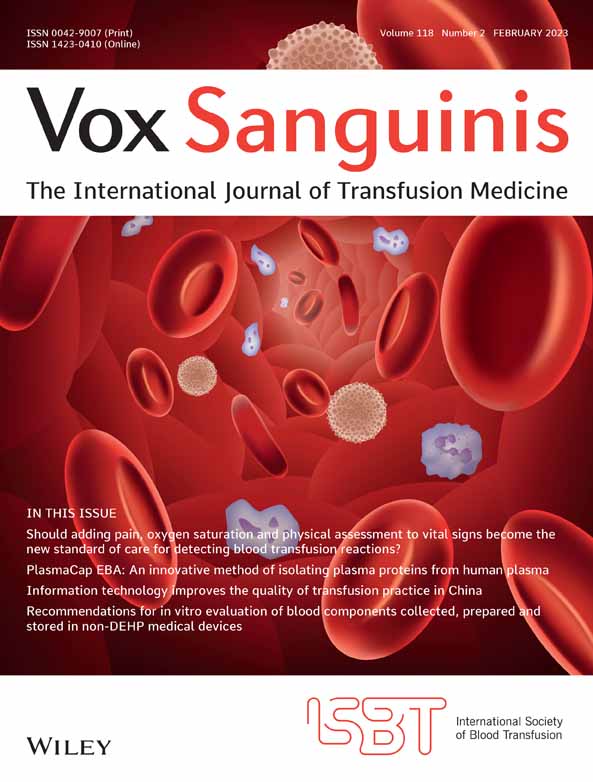Medication use in Canadian blood donors
Funding information: The authors received no specific funding for this work.
Abstract
Background and Objectives
Policies regarding medication use vary between blood centres. We evaluated medication use in eligible Canadian Blood Services whole blood donors to inform possible process improvements and allow comparisons between donors and the general population.
Materials and Methods
All donors are asked about medication use in the last 3 days, and medications and their reason for use are documented in our donor computer system. Donor computer records were reviewed from January 1, 2020, to March 31, 2022 to extract information on medications by donor age and sex; medications were grouped into therapeutic classes. Stability of medication use over time was determined in a random sample of 100 donors who made at least two donations in the study period.
Results
One-third of successful (eligible) donors were taking medications; of these, 80% were on one or two medications. Five classes of medication accounted for 72% of medication use, and 13 classes account for 93% of use. Use remains relatively stable over time.
Conclusion
Medication use is common, with a few classes accounting for most use. Drop-down lists and storage of information from one donation to the next may enhance efficiency.
CONFLICT OF INTEREST
The authors declare that there is no conflict of interest.




